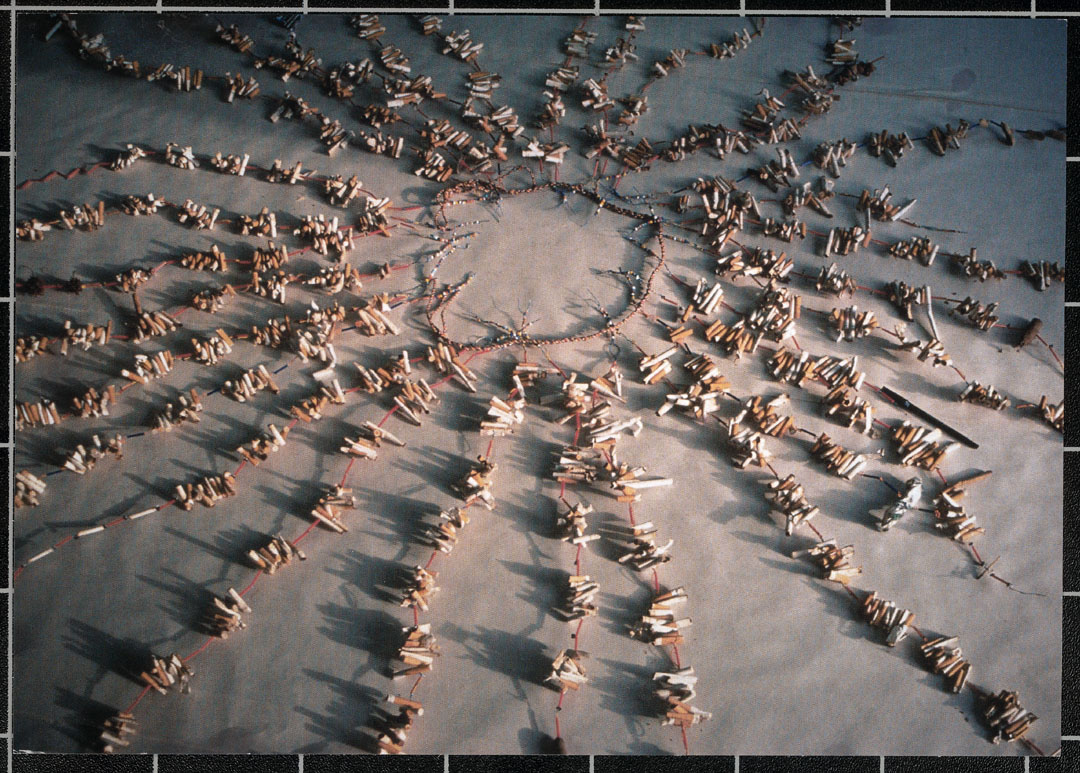
Tobacco Quipu is a visual documentation of a performative art piece enacted September 2, 1992 to October 2, 1992. Each day for thirty days for ten minutes I collected cigarette butts in parking lots, on the steps of formidable government buildings, in places of pristine beauty.
Tobacco Quipu was presented in Nature Books, an exhibition at Gallery Route One showcasing new definitions of the book. March 24- May 1, 2000 and In conjunction with the Environmental Law Alliance Worldwide at the University of Oregon, Eugene, OR Art for Environmental Advocacy, February 27- March 30, 2000.
Tobacco Quipu
There are so many things we don’t see anymore: categories of disregard, chemical imbalances, the extinction of species. The earth is aching from the burden…
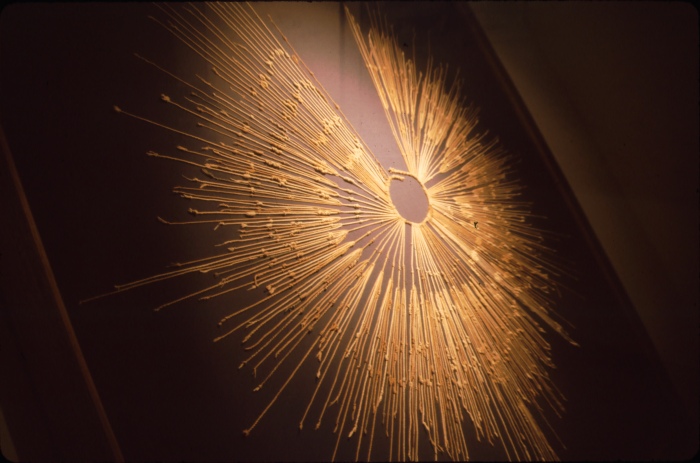
In 1987 at the National Museum of the Archaeology, Anthropology, and History of Peru in Lima, I was awestruck by the beauty of the ancient Inca quipus on display. Years later, inspired by that experience I created Tobacco Quipu as a visual documentation of a performative art piece enacted from September 2, 1992 to October 2, 1992 . Each day for thirty days for ten minutes I collected cigarette butts in parking lots, on the steps of formidable government buildings, in places of pristine beauty. Everywhere, everywhere.
The intricate knotted cord accounting system used by the Incas provided the perfect model for my reckoning. The daily amounts were strung on long colored wires. Between each group of ten, a pattern of beads denoted the day of the week. Found objects from the collection site were added to indicate the location. When displayed, the strands of the quipu stretch to a 16’ diameter circle.
To chronicle the process of collection, I kept a daily journal calendar with information about the site of collection, the moon phase, number of butts collected and personal insights.
Questioning the bio-degradability of the cigarette butts, I wrote to tobacco companies. Their responses were included in the artist book and audio tape that accompanied the exhibition.Lorillard (Newport, Old Gold, Kent) responded with,”The environment has a great influence on how long it takes for a filter to degrade.” Brown and Williamson (Cool, Raleigh, Lucky Strike) said,”Currently, there is no consensus regarding a definition used to measure biodegradability.” RJ. Reynolds (Winston, Camel, Salem) wrote, ”Practically all of the materials we use have some degree of biodegradability under proper conditions.” In other words those butts are going to be around for a long, long time which is great for archival ART but not for the environment.
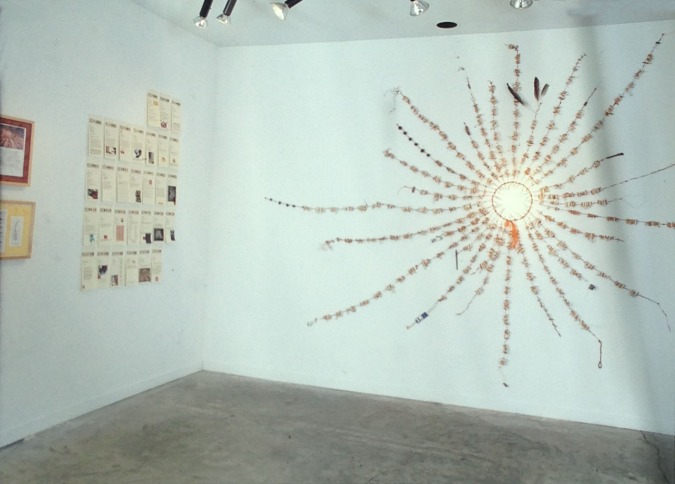
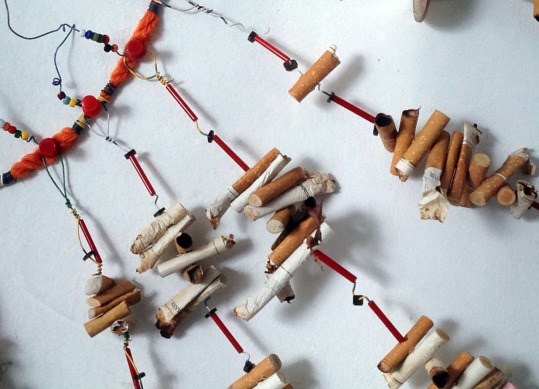
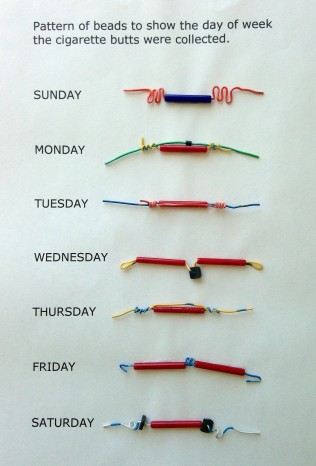
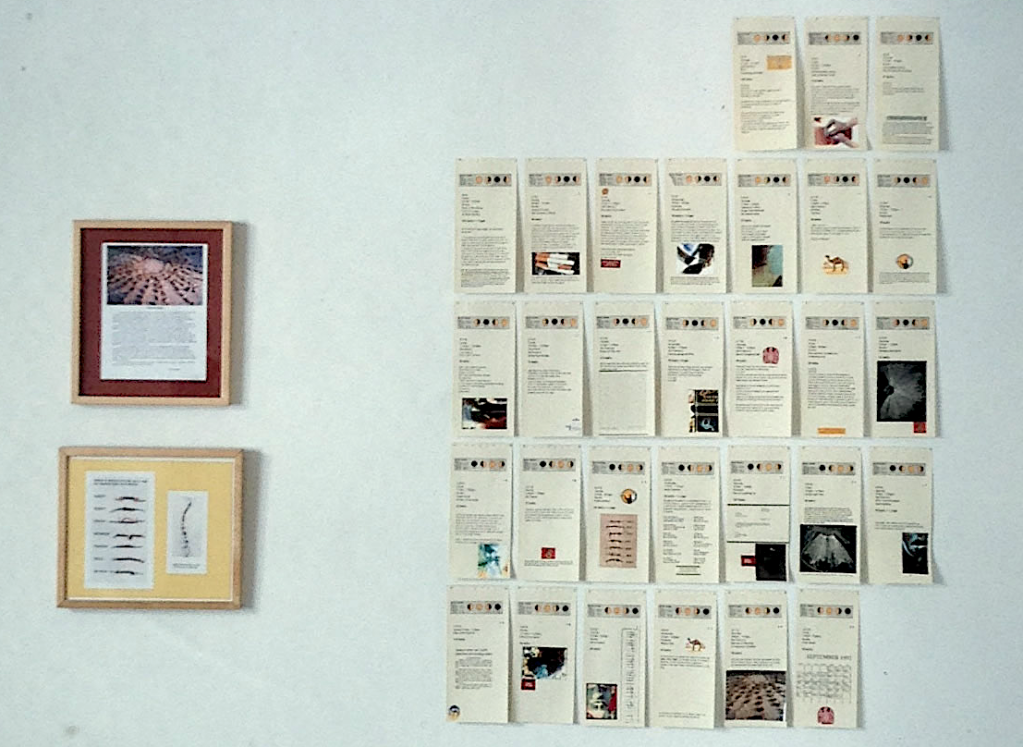
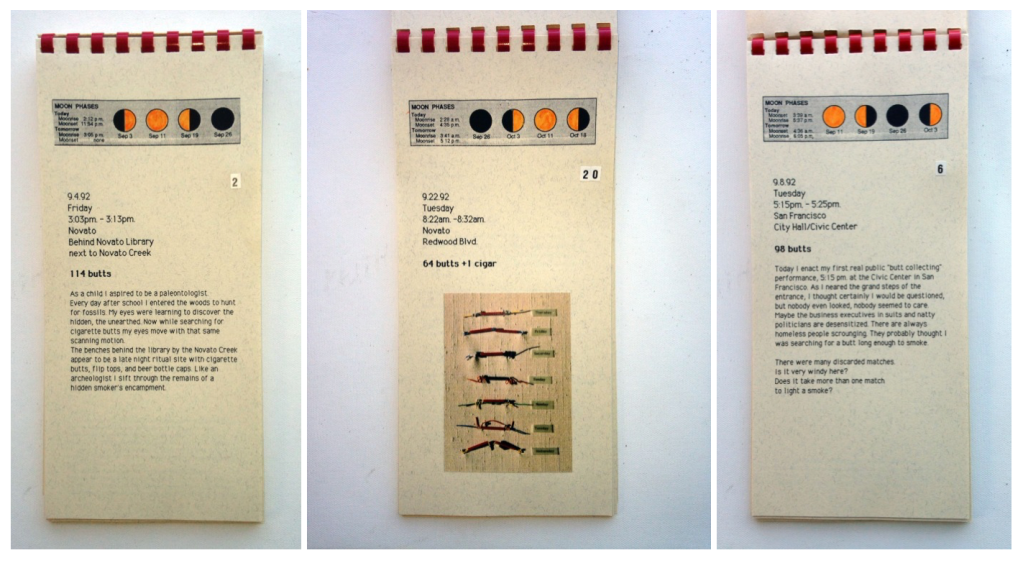
*
*
*
*
*
*
*
*
*
*
*
*
*
*
*
*
*
*
*
*
*
*
*
*
*
*
*
*
*
*
*
*
*
*
*
*
*
*
*
*
*
*
*
*
*
*
*
*
*
*
*
*
*
*
*
*
*
*
*
*
*
*
*
*
*
*
*
*
*
*
*
*
*
*
*
*
*
*
*
*
*
*
*
*
